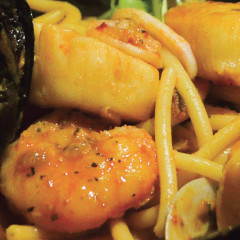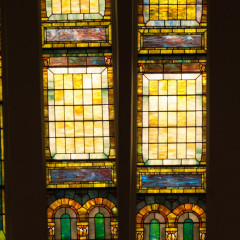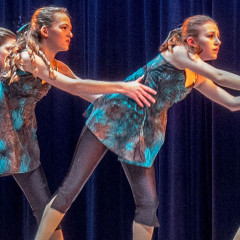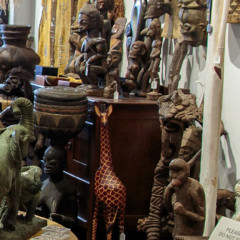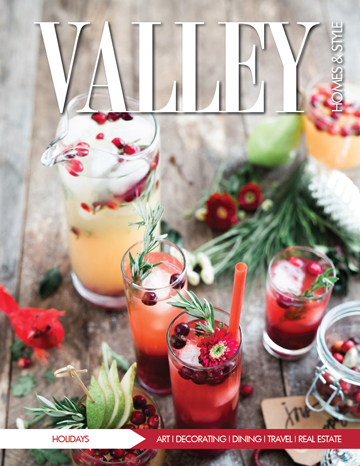Lot 12 – Fine Dining in a Warm and Comfortable Venue
By Pam and Tim Lettie Photos by Pam Lettie Strolling toward Lot 12, we feel the peaceful evening settling in around us. Closing our eyes, the soothing aroma of late fall wood smoke wafting through chilly air seeps into our subconscious. Climbing the steps to the front entrance of the house, walking past the wrap-around porch, looking out over the park and homes below, then strolling through the entryway, we feel at ease. The sense of home and comfort overtakes us. The hostess reinforced the sense of ease as she escorted us to our table. From our table at the front of the dining room, we look out on the orange setting sun, while dimmed interior lights and muted conversations hum in the dining room next to us. We bask in a homey interior, where two-toned neutral paint colors are separated by a dark brown chair and crown moulding that serves double duty as a picture hanger, with artwork by the chef’s parents, Jan and Jonathan Heath punctuating the simple wall colors. A cheerful and welcoming waitress brought us bread and olive oil before our meal, but ever vigilant of the effect of carbs on our middle-aged frames, we, like the growing numbers of carbweary boomers, sought out other appetizer options. With a menu as eclectic and varied as the Lot 12 menu, we looked for expert advice, quizzing our waitress about her favorites. For our appetizer, tuna or duck? For our entree, coq au vin or cioppino? For dessert, creme brulee or apple crostata? We opted for the rare ahi tuna roulade appetizer. The slices of raw tuna wrapped around homemade nappa slaw gave the appearance of sushi bites, but each bite contained the delicious crunch of fried wontons. The slaw on the side, along with the seaweed salad, were topped with the welcome crunch of fried wontons. The three tuna roulades sat on a sea of creamy wasabi dressing drizzled with a hint of ponzu, a tangy Japanese citrus-soy blend. The wasabi flavor was muted by the cream, without wasabi’s typical strong punch, but complementing the rice vinegar dressing on the slaw. We were in a Saturday frame of mind, but it was actually Sunday. Even on a Sunday evening, three-quarters of the tables were full. We were lucky to arrive early and trade in a middle-of-the-room table for an intimate table for two in front of the big windows overlooking the porch and the park. A two-foot wrought-iron dragonfl y hung inside the window, adding an artistic accent to an already charming view. The two-person table next to us featured a bench seat complete with a...
The Tiffany Windows of Franklin County
By Cheryl M. Keyser Photos by Monika Wertman Tiffany. It’s a name that evokes images of diamonds, pearls, and multicolored gems arranged in exquisitely designed settings at equally exquisite prices. Recall the film “Breakfast at Tiffany’s” with an elegant black-gowned Audrey Hepburn peering in its windows. That Fifth Avenue mecca for the wealthy, however, had a much more prosaic origin – sand – common silica found in most rocks and mixed with elements to produce the delicacy of glass. The son of the original owner of Tiffany, Louis Comfort Tiffany, raised this humble medium to a glorious height – reinterpreting, indeed recreating, stained glass, a decorative art form that has endured for centuries and giving it new prominence. Stained glass is most commonly associated with churches, their colorful glass windows filled with religious imagery to remind parishioners of the stories of their faith. In the hands of Louis Comfort Tiffany, this medium came into the 20th century reborn in an atmosphere of Art Nouveau, spellbinding with both religious and secular themes. A select representation of these famed windows can be seen in Franklin County, Pa., which has a sizable, yet unheralded, array of Tiffany stained glass windows. “We have a varied collection that would rival some larger towns and cities,” says Mike Albert, Chambersburg architectural historian and guest speaker on a 2015 bus tour of these gems. Six different sites in the county – from Beartown to Welsh Run, churches to academic institutions – By Cheryl M. Keyser Photos by Monika Wertman bear witness to his radiant work. Tiffany (1848-1933) was born in New York City, the son of Charles Lewis Tiffany, the founder of the eponymous store. He was educated at military academies in both Pennsylvania and New Jersey, but put that training behind him to follow his natural instincts into painting. One of his early teachers was George Inness, known as the father of American landscape painting. On a fortuitous trip to Europe, he visited the Victoria and Albert Museum in London, which held an extensive collection of early glass. Drawn to its possibilities, he returned and set up his own glass factory in Corona in Queens, New York, to improve on the production of what he had seen. His most inventive contribution was the development of what he called favrile glass which he patented in 1892. (Favrile is variously attributed to an early French or Old English word meaning handmade.) He brought this new glass to the interior design of the Mark Twain House in Connecticut and also to the White House. President Chester A. Arthur wanted to redecorate his official home and he commissioned Tiffany...
The Passion for Dance
By: Bonnie Williamson Photos By: Josh Triggs The famous American dancer and choreographer Martha Graham once said, “Great dancers are not great because of their technique, they are great because of their passion.” A passion for the many forms of dance has been the motivation for a two-day festival of master dance classes and a gala performance, now entering its third year, sponsored by Dance Works. Dance Works is a collaborative effort created by the local dance community and the Berkeley Arts Council, a nonprofit, volunteer organization, devoted to building a vibrant arts community in Berkeley County. The Martinsburg Berkeley County Parks and Recreation board is also a sponsor of this event. The festival will be held February 26 and 27 at Musselman High School, 126 Excellence Way, Inwood, W.Va. It’s open to beginning, intermediate and advanced students, ages 10 to 18, participating in dance schools and companies. Classes include instruction in ballet, modern, jazz, hip hop and folk dancing. The festival culminates on Saturday at 7 p.m. with a performance by students so they can share their dance pieces with friends and neighbors, says Jane Horst, chairwoman of the Dance Works planning committee and a volunteer at the arts council. Tickets for the Saturday performance are $10 for adults, $5 for children and free for those under 12. “This is not a competition. It’s an educational experience. We wanted dancers to have another opportunity to be on stage, too. It’s local. They don’t have to travel,” says Horst. Members of the planning committee responsible for the event are Emily Bernazzoli, director of Dance Dimensions of Hedgesville; Denna Smith, director of Inwood Performing Arts Company; Kat Ward, director of Rhythm ‘n Motion Dance Studio in Martinsburg, and Andrea Kilmer, dance teacher, dance department director and Synergy Dance Ensemble director for Washington High School in Charles Town. Last year’s festival had 122 dancers attending classes with close to 300 people in the audience for the gala performance, says Horst. “The festival is a great way to unify the dance community in a collaborative educational setting,” says Ward. “Participants can experience different instructors. They can network and just have the joy of dancing, explore other styles. It’s a positive outlet for students. We know how important dance is to young people.” “We are passing on our passion for dance to others,” says Bernazzoli. Classes will be taught by five dance masters with a wide variety of experience. Yoav Kaddar, the director of the dance program at West Virginia University, is a graduate of the Julliard School, where he earned a BFA and received the Martha Hill Award for Outstanding Achievement and...
The Queen Street Gallery
A World of Wonder in the Heart of Martinsburg By: Audrey Knapp Photos By: Josh Triggs Strolling down Queen Street is a cold feat this time of year and can cause us to rush past the storefront windows without wondering much about what’s behind them. Try to forget the cold for a moment and take a chance; step inside the warm, beautiful Queen Street Gallery owned and operated by Greg and Janie Henry. Here you’ll find a little something for everybody. Art collectors Greg and Janie Henry decided to share their passion with the community by securing a large building in the historic downtown area and opening their gallery. Born and raised in Berkeley Springs, Greg was very comfortable with the idea of opening a business here. “This is the best place for us,” Greg states confidently. “We really like it here.” Initially, launching the business and moving the framing services to a storefront location served as an ideal opportunity to relieve Janie of the long, dreadful commute which came with her traditional employment. Previously, they had run a framing business from home while both worked regular full-time jobs. A few years after opening the Gallery, Greg was able to join his wife and work in the business full-time. Although the shop opened its doors at 213 Queen street in June of 1997, it’s still a hidden treasure yet to be discovered by many locals. Enter this quiet world of wonders and prepare to be intrigued and surprised! Upon crossing the threshold, you’ll be greeted by rows of posters, prints, and old maps. All of the posters offered by Queen Street Gallery are both original and out-of-print, meaning you can’t buy them from a catalogue, and most are so rare they’d be difficult to find anywhere else. In the aisles and on the walls of the first room await a wealth of old maps, vintage art, and original civil war prints. If you’re lucky, you might just get your hands on some local historical prints or maps! Ask Greg or Janie if you’d like something as particular as that – they may have it, or they may know where you can find it. In the center of the shop you’ll find vintage and high-end costume jewelry (generally from the 1930’s and 1940’s), and many small, fragile antiques such as traditional lacquered Russian boxes. Delicate and beautiful, these boxes have a background steeped in rich culture and tradition. The farthest room hosts original art and high-end, mid-twentieth century furniture which is all available for purchase. Greg and Janie only display and offer items in great condition, so if you’re looking...
Valley Homes & Style Magazine | February – March 2016 Edition
February – March 2016 Edition

